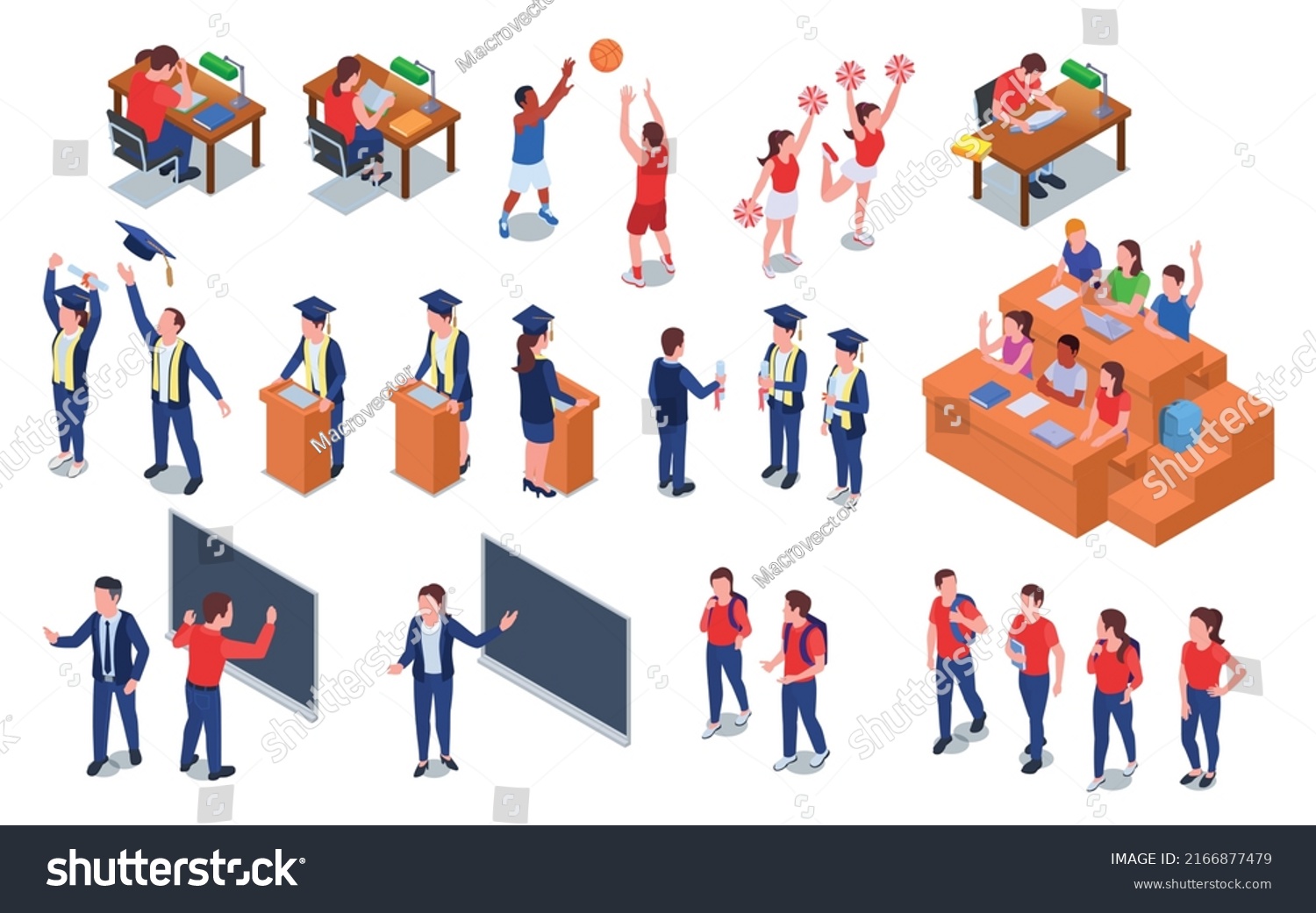In the world of academia, visual elements can transform a simple paper into an engaging narrative. This is where iStock Images comes into play. Offering a vast library of high-quality stock photos, illustrations, and videos, iStock is a go-to platform for students and educators alike. Whether you're crafting a presentation, enhancing a research paper, or adding visual flair to an assignment, iStock can help you bring your ideas to life. But before diving in, it's essential to understand how to effectively and ethically use these images in your college papers.
Understanding Licensing for Educational Use

When incorporating images from iStock into your educational projects, grasping the concept of licensing is crucial. Licensing dictates how you can legally use the images, and not adhering to these guidelines can result in serious consequences, including academic penalties.
Here’s a breakdown of what you need to know about licensing:
- Standard License: This is the most common type of license offered for iStock images. With a standard license, you can use images for various educational purposes, including presentations, reports, and online projects. However, note that there are restrictions on reproduction and distribution, especially for commercial use.
- Extended License: If you plan to use images in a way that requires additional rights—like creating merchandise—you may need to secure an extended license. This is less common for college use but essential for projects that go beyond typical academic needs.
- Editorial Use Only: Some images are marked for editorial use only, meaning they can't be used for promotional or commercial purposes. For educational content, these images are often acceptable, but remember they're restricted to a non-commercial context.
When you download an image, make sure to check its licensing terms within iStock. You'll usually find this information in the image details before purchase. Here are some key considerations when using images:
- Attribution: While many licenses don’t require attribution, it’s good practice to credit the creator if possible. This promotes ethical use and appreciation for the artist's work.
- Modifications: If you plan to edit or alter the images, verify whether your chosen license allows for modifications. Some images have strict rules regarding alterations.
- Educational Fair Use: It's worth noting that U.S. copyright law provides some leeway for educational use. However, fair use can be subjective—consider the purpose, nature, amount, and market effect of your use.
In summary, understanding the licensing agreements on iStock Images is essential for responsible use in your academic pursuits. Not only does it keep you within legal boundaries, but it also fosters a respect for creative work that can enhance your reputation as a budding scholar. So, before you pop that stunning image into your project, take a moment to review its licensing terms and use it appropriately!
Also Read This: How to Buy Videos on iStock as a Content Creator
3. How to Find Appropriate iStock Images for College Assignments

Finding the right iStock images for your college assignments can feel a bit overwhelming. With so many options available, how do you sort through the vast library to find the perfect visuals that resonate with your work? Here are some tips to streamline your search!
1. Use Specific Keywords: Start with precise keywords that describe the image you’re looking for. For example, if you need an image for a psychology paper, you might try keywords like “mental health,” “therapy,” or “counseling sessions.” The more specific you are, the better your search results will be.
2. Filter Your Search: iStock offers various filtering options. You can filter by image type (like photos, illustrations, or vectors), orientation, color, and even style. Use these filters to narrow down your options and find the images that fit the tone and style of your assignment.
3. Explore Collections: iStock often curates collections of images around specific themes or trends. Check out these collections, as they can be a goldmine for finding relevant images quickly. Whether it's for environmental issues, cultural studies, or technology, these themed collections might save you time.
4. Check for Editorial Use: Some images are marked for editorial use only, which means they can’t be used for commercial purposes. Be cautious with these images if you're planning to include them in presentations or any materials that might be seen as commercial. Always double-check the usage rights!
5. Make Use of Similar Images: Once you find an image you like, don’t overlook the 'similar images' feature. This can lead you to other visuals that fit your criteria but might not have come up in your original search. It’s a fantastic way to discover additional resources!
Lastly, remember to stay organized as you search. Use a folder or a document to keep track of the images you like, along with their sources and license information, so you won’t scramble to find them later when it’s time to wrap up your assignment!
Also Read This: How to Take Great Photos for iStock: Pro Photography Tips
4. Using iStock Images Legally in Academic Papers

When it comes to academic integrity, using images legally is just as important as citing your sources properly. Here’s how to ensure you’re using iStock images in a way that respects copyright laws while enhancing your college papers!
1. Understand the License Agreement: Every image on iStock comes with a specific license which outlines how you can and cannot use it. It’s crucial to read this agreement to avoid any unintentional misuse. Most academic purposes fall under the rights allowed, but it’s always good to check!
2. Attribution is Key: Unlike some free stock image sites, iStock images typically do not require attribution. However, it’s still good practice to cite the images in your bibliography or reference list if they play a significant role in your paper. This demonstrates academic honesty.
3. Incorporate Images Thoughtfully: When you use images in your paper, think about their relevance. An image should serve a purpose—be it to illustrate a point, provide evidence, or enhance understanding. Make sure to integrate it seamlessly into your text, linking back to your arguments or data.
4. Keep in Mind the Context: Make sure the images you choose fit the context of your work. Avoid using visuals that could misrepresent your research or findings. This step is crucial as it ensures clarity and accuracy in your academic writing.
5. Consider Alternative Resources: If you’re working on a tight budget or want to avoid licensing fees altogether, look into other resources for images. Universities often have subscriptions to other image databases, or you can explore Creative Commons images that are free to use (with some restrictions).
By adhering to these guidelines, you’ll ensure that your use of iStock images supports your academic integrity rather than detract from it. Plus, with the right visuals, your papers will shine with professionalism and insight!
Also Read This: Does iStock Consider Erotica to Be Pornographic? Understanding Content Guidelines
5. Best Practices for Citing iStock Images in Your Work
When it comes to incorporating iStock images in your college papers or educational projects, proper citation is key. Not only does this show respect for the original creator's work, but it also adds credibility to your own. Here are some best practices to ensure you're citing iStock images correctly:
- Check the License: Before using an iStock image, confirm that you understand the licensing agreement. iStock offers different types of licenses, such as standard and extended, each with specific rules regarding usage. Be certain that you’re using the image within the terms set forth by iStock.
- Use Proper Formats: Depending on your educational institution’s citation style (APA, MLA, Chicago, etc.), the format for citing images may vary. Here’s a basic structure you can follow:
| Style | Citation Format |
|---|---|
| APA | Creator Last Name, First Initial. (Year). Title of image [Format]. Site Name. URL |
| MLA | “Title of Image.” Website Name, Creator Name, Date of publication, URL. |
| Chicago | Creator Last Name, First Name. Year. “Title of Image.” Website Name. URL. |
- Include Image Credits: Besides just citing it in the bibliography or reference page, consider including image credits directly below the image in your project. This makes it clear where the image was sourced from and adds transparency to your work.
- Be Mindful of Fair Use: Familiarize yourself with the concept of fair use, especially in educational contexts. While you may have the right to use iStock images under a purchased license, there are instances where fair use standards apply. Always evaluate whether your use of the image is justified under this principle.
By being diligent about your citations, you’ll not only avoid possible academic penalties but also enrich your work with properly credited visual content.
Also Read This: How to Credit iStock Photos Correctly in Your Creative Projects
6. Alternatives to iStock for Educational Use
If you're looking for options beyond iStock, there are plenty of alternatives that offer free and paid images suitable for college papers and other educational materials. Here’s a round-up of some fantastic resources:
- Unsplash: This is a popular platform for incredibly high-quality images that are completely free to use, even commercially. Just make sure to credit the photographers when possible!
- Pexels: Similar to Unsplash, Pexels provides a vast collection of free photos and videos. They emphasize user-generated content and also allow for modification and adaptation of images.
- Pixabay: Offering over a million free images and videos, Pixabay is a fantastic resource. Their collection contains various types of media, and all of them are free to use without attribution (though it's welcomed).
- Flickr: While known for its community-driven photo-sharing features, Flickr also has a tremendous selection of Creative Commons images for educational use. Be sure to check the licensing for individual images!
- Google Images (with filters): You can utilize Google Images to find images that are labeled for reuse. Just go to the search tools and select "Usage rights" to filter your search results.
While iStock is a great resource for high-quality images, these alternatives can save you money and are perfectly suitable for academic work. Just like iStock, always read the licensing agreements to ensure you're in compliance with each platform's rules.
With the right resources and citation practices in place, you can enhance your educational projects with stunning visuals, making your work more engaging and professionally appealing!
Conclusion: Making the Most of Visual Resources in Academia
In today's educational landscape, the integration of visual resources such as iStock images can significantly enhance the quality and impact of college papers and presentations. By utilizing high-quality images, students can:
- Enhance Engagement: Visuals captivate attention and help maintain interest throughout your work.
- Improve Understanding: Complex concepts can often be simplified with relevant imagery, allowing for clearer communication of ideas.
- Support Arguments: Well-chosen visuals can serve as evidence, reinforcing your thesis and supporting your claims effectively.
When incorporating iStock images, consider the following best practices:
- Choose Relevant Images: Ensure that the visuals directly relate to your topic and contribute meaningfully to your content.
- Respect Copyright: Always adhere to licensing agreements and give proper credit to the image sources as required.
- Maintain Quality: Opt for high-resolution images that enhance the professionalism of your paper or presentation.
Additionally, a balance is key; while visuals are powerful tools, they should complement rather than overpower your written content. By thoughtfully integrating images, students can elevate their work and present their arguments persuasively.
In conclusion, leveraging visual resources such as iStock images can greatly enrich academic endeavors, fostering deeper understanding and engagement while adhering to ethical practices. Embrace these tools to enhance your educational experience and communication effectiveness.
 admin
admin








